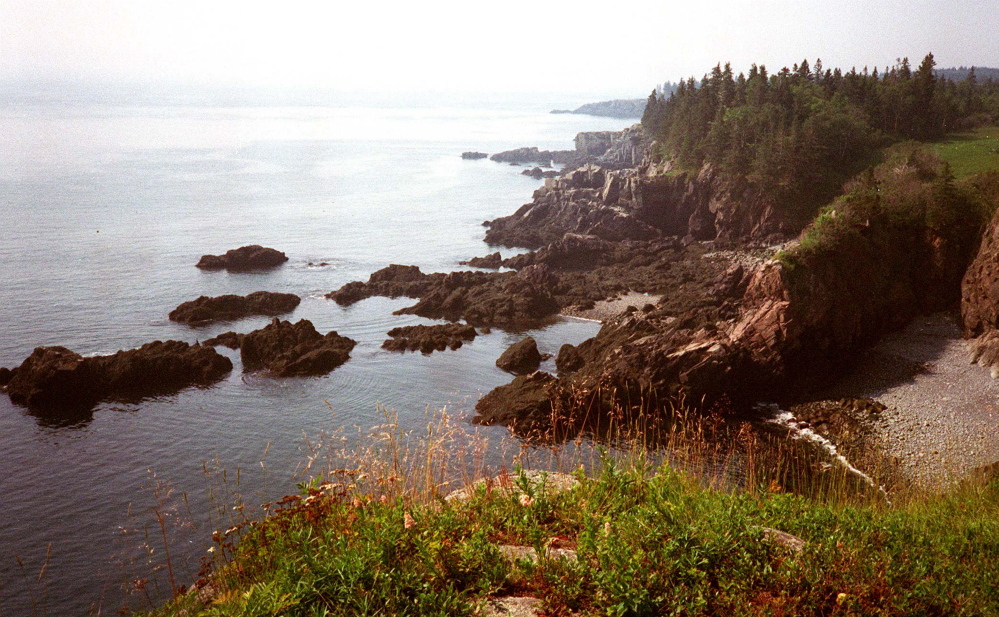When Land for Maine’s Future began in 1987, I had a front-row seat – working at the State Planning Office, where the program was housed. New state programs don’t typically generate much spectator interest, but this one was different. Its participatory, “made in Maine” approach to protecting special places generated enthusiasm in many quarters.
A rousing talk by Angus King – then a public affairs program host and Land for Maine’s Future’s most ardent champion – had inspired my interest in this initiative. What stuck with me from that talk was King’s observation that few things we do in life will ever be as substantial and lasting as preserving land. The new program offered a chance for Mainers to touch the far-distant future.
That was a heady concept for a recent college grad intent on leaving the world a better place. More than a quarter-century later, it’s still a rationale for land protection that stirs me deeply.
In the intervening decades, I’ve visited many places that the LMF program helped secure for Maine people, from Mount Agamenticus in York County to Eastport’s Shackford Head, and inland to settings like Tumbledown Mountain and the Rangeley Lakes. Most times I planned these visits, but occasionally I would stumble upon a property unexpectedly – like the Newport/Dover-Foxcroft Rail Trail – when passing through an area on other business.
My appreciation for the program’s land portfolio grew exponentially when I had the good fortune to be asked to draft property descriptions – so Mainers could readily find the lands they had helped to preserve. That online directory lived on the State Planning Office website until the agency was dismantled: now it resides at the website of the Natural Resources Council of Maine.
Researching lands for that project felt like being on an extended treasure hunt. Alongside legendary landmarks whose protection had made headlines, like Mount Kineo and the Cutler Coast, were dozens and dozens of lesser known gems – water access points, farms and orchards, and community hiking trails.
Digging into details from the project applications, I found listings of rare species and habitats alongside countless testimonials from those who relied on the land – for food (hunting, fishing, farming and berry-picking); for business (guiding and ecotourism); and for spiritual sustenance.
Interwoven through this elaboration of ecological and economic values were fascinating snippets of cultural history (who would have guessed that Teddy Roosevelt twice visited Bible Point on Mattawamkeag Lake in Aroostook County?!).
Describing the features of each unique and irreplaceable property, I was struck again and again by our collective wisdom in keeping these places intact. I could take no direct credit for effecting these project successes, yet I felt a vicarious pride of ownership – just being a Maine citizen who had cast repeated votes in support of Land for Maine’s Future.
I was in good company. Disappearing behind striped curtains around the state, fully two-thirds of Maine voters had backed LMF bonds – six times over. Landowners from all walks of life had worked hard to make projects happen by negotiating openly, waiting patiently for grant funds, and often contributing a portion of the land’s value to make the deal work.
Maine’s solid and enduring support for Land for Maine’s Future gives me hope, an increasingly rare commodity in the environmental arena. Given the array of planetary problems threatening to disrupt our lives, it’s immensely heartening to see examples of people working cooperatively to affirm their shared passion for place.
It came as a kick in the gut to have Gov. LePage sabotage voter-approved Land for Maine’s Future projects, trying to force legislators to increase logging on public lands. His move is straight out of the current conservative playbook – a concerted push across the country to dismantle public lands and open them for economic exploitation. But his choice to use as ransom Land for Maine’s Future funds already approved by a public vote is particularly troubling.
Gubernatorial strong-arming runs counter to the essence of a program built on voluntary participation and trust. Land for Maine’s Future is a beacon, an exemplary model of getting sustainability right. It’s about communal work to ensure resources for the future, to hand forward places with their beauty and productivity intact.
So many people over the past quarter-century have put their faith in Land for Maine’s Future: landowners devoted to their properties; community members ponying up the needed local match for grants; conservationists dedicating long hours to negotiate deals; and citizens showing up repeatedly to vote their support.
All of us who believe in LMF share a vision of leaving Maine better for our time here.
I trust we’ll keep holding to that, skirting the recent roadblocks thrown in our way. In my long-ago state job, a colleague used to remind us that “governors come and governors go.” The land we protect remains.
Marina Schauffler, Ph.D., is a writer who runs Natural Choices (www.naturalchoices.com ). Disclosure notice: Some of Schauffler’s clients – current and past – work on Land for Maine’s Future projects and advocacy, and, as stated in this column, more than a decade ago she had a temporary contract to write descriptions of Land for Maine’s Future properties.
Send questions/comments to the editors.



Success. Please wait for the page to reload. If the page does not reload within 5 seconds, please refresh the page.
Enter your email and password to access comments.
Hi, to comment on stories you must . This profile is in addition to your subscription and website login.
Already have a commenting profile? .
Invalid username/password.
Please check your email to confirm and complete your registration.
Only subscribers are eligible to post comments. Please subscribe or login first for digital access. Here’s why.
Use the form below to reset your password. When you've submitted your account email, we will send an email with a reset code.